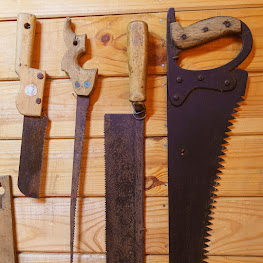Understanding the various types of saws in carpentry
Certainly! Carpentry involves using various types of saws to cut and shape wood and other materials. Each type of saw has its specific purpose and features. Here are some common types of saws used in carpentry:
1. Hand Saw: Hand saws are versatile and come in various designs, including crosscut saws for cutting across the grain and rip saws for cutting with the grain. They are ideal for smaller woodworking tasks and are operated manually.
2. Backsaw: A backsaw has a rigid back that provides extra support to the blade, ensuring more accurate and precise cuts. Examples include the tenon saw and the dovetail saw.
3. Coping Saw: This saw has a thin, flexible blade stretched between a U-shaped frame. It is used for intricate cuts and curves, making it ideal for detailed woodworking tasks like coping moldings.
4. Circular Saw: Circular saws have a circular blade with teeth around the edge, powered by electricity or a battery. They are suitable for making straight cuts in various materials, including wood and plywood.
5. Jigsaw: A jigsaw has a fine, narrow blade that moves up and down rapidly. It is excellent for making curved and intricate cuts in wood and other materials.
6. Miter Saw: Miter saws are designed to make precise angle cuts, such as miter cuts (angled cuts across the face of the material) and bevel cuts (angled cuts through the thickness of the material). They are widely used for framing and molding.
7. Table Saw: Table saws have a circular blade mounted on an arbor and are integrated into a flat table surface. They are powerful and ideal for making straight cuts, ripping large sheets of wood, and making crosscuts with precision.
8. Band Saw: Band saws have a continuous loop of toothed steel band that rotates around two or more wheels. They are versatile and used for making curved cuts, resawing lumber, and cutting irregular shapes.
9. Scroll Saw: Similar to a jigsaw, a scroll saw is used for intricate and detailed cuts, but it has a reciprocating blade that allows for more precise control.
10. Reciprocating Saw: Also known as a recip saw or a sabre saw, this powered saw has a back-and-forth motion, making it suitable for rough cuts and demolition work.
11. Chainsaw: Chainsaws have a chain with sharp teeth, and they are primarily used for cutting large logs and heavy-duty woodworking tasks, often in outdoor settings.
Remember that safety is paramount when using any type of saw, so always wear appropriate safety gear and follow the manufacturer's instructions and safety guidelines.
Click here👇






